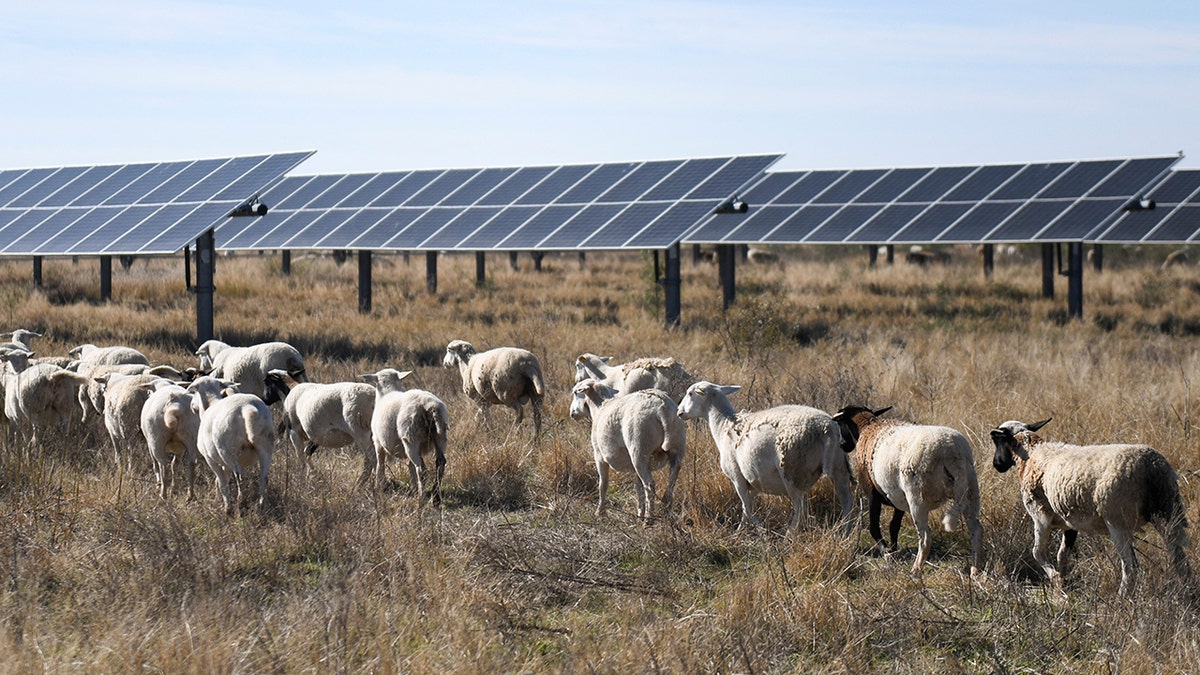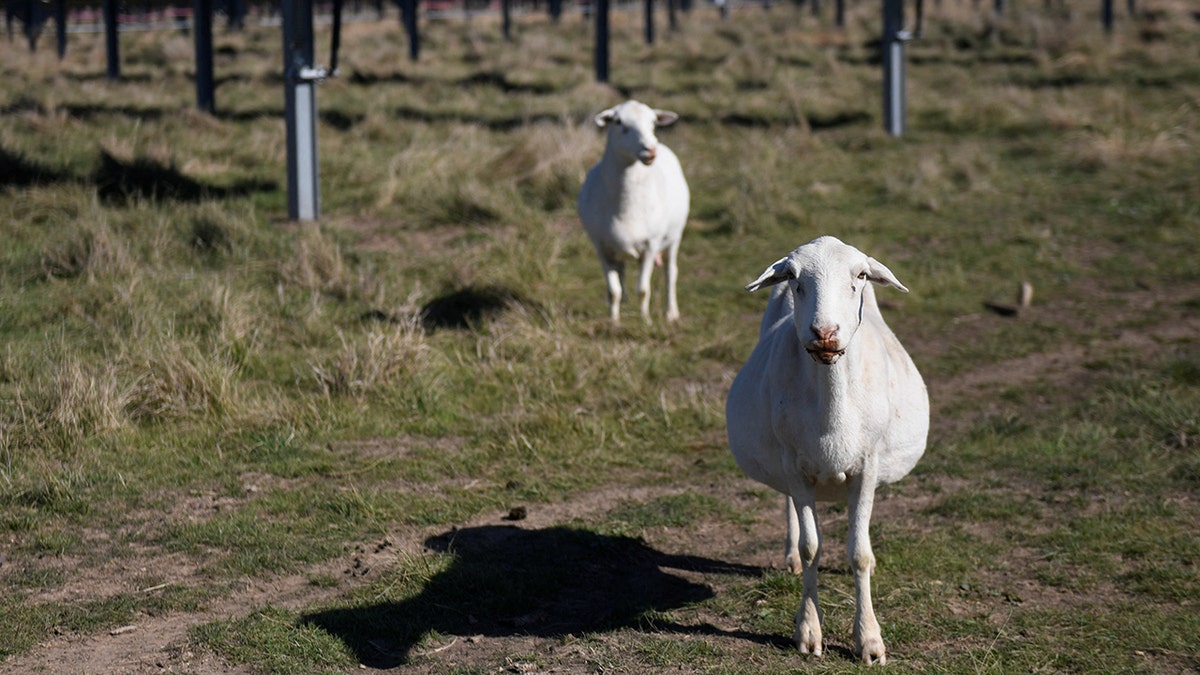Solar companies deploy sheep across farms in growing green energy trend

NEWYou can now listen to Fox News articles!
Forget roaring lawnmowers and fuel-guzzling tractors. Today’s solar companies are turning to flocks of sheep to trim grass and control weeds under solar panels. These eco-friendly grazers easily navigate narrow panel rows, cutting maintenance costs and carbon emissions at the same time. In fact, using sheep instead of gas-powered mowing crews can reduce upkeep expenses by up to 20 percent.
Sign up for my FREE CyberGuy Report
Get my best tech tips, urgent security alerts and exclusive deals delivered straight to your inbox. Plus, you’ll get instant access to my Ultimate Scam Survival Guide – free when you join my CYBERGUY.COM newsletter.
WHY AI IS CAUSING SUMMER ELECTRICITY BILLS TO SOAR
Why solar grazing with sheep cuts costs and emissions
Sheep fit neatly between solar arrays, reaching into nooks that mechanical gear can’t. They chew rain or shine. And since sheep run on grass, not gas, their grazing helps reduce carbon emissions. Using these natural lawnmowers better aligns with solar’s green mission goals. Developers like SB Energy in Texas now rely on herds of around 3,000 sheep to cover thousands of acres, benefiting both their bottom line and the planet.
WHY YOU SHOULD THINK TWICE BEFORE JOINING A POWER SAVER PROGRAM
How agrivoltaics turns sheep and solar panels into profits
This isn’t your average landscaping story. There’s even a fancy word for it: agrivolatics, or the practice of combining solar energy production with agriculture. Farmers who jump on board aren’t just maintaining the lawn; they’re opening up multiple revenue streams. First, ranchers can lease land to solar companies, sign grazing contracts, while still earning from traditional farm products like wool and lamb.
Chad Raines is a rancher from Texas. He decided to trade in cotton farming for sheep grazing on solar land. That move has paid off. Last year, he brought in around $300,000. If he had stuck with cotton, he estimates he would’ve lost about $200,000 instead. That’s a huge swing, and it’s a real-world example of how solar grazing is helping revive a sheep industry that had been stuck in neutral for decades.
How sheep improve soil health and boost biodiversity at solar farms
Letting sheep do the mowing isn’t just about saving time or money. It actually helps the land. As they move through the fields, sheep naturally break down plant material, aerate the soil and leave behind fertilizing manure. This leads to healthier dirt and better carbon capture.
Companies like Lightsource BP are already seeing those benefits. They manage over 14,000 sheep across solar farms that produce more than 3 gigawatts of power. These sites aren’t just power generators, they’re also habitats. Flowers that support bees and butterflies are planted among the panels, creating ideal conditions for pollinators. Some farms have even started producing honey thanks to the thriving bee population.
GOOGLE TURNS CO2 INTO BATTERY POWER FOR CLEAN ENERGY

Major solar farms scale up sheep grazing across thousands of acres
This isn’t just happening on a small scale. Enel North America recently signed one of the biggest solar grazing deals in the country. They’re deploying over 6,000 sheep across eight large solar farms, covering more than 10,000 acres.
At some of those sites, the amount of organic matter in the soil has more than doubled. For solar operators, this approach just makes sense. It cuts operations and maintenance costs, strengthens environmental credibility and builds better relationships with nearby communities.
Investors are paying attention, too. In just two years, the number of solar grazing projects has skyrocketed, especially in places backed by heavy hitters like DE Shaw and Berkshire Hathaway.

What solar grazing means for you
If you care about clean energy, sustainable farming or smart land use, solar grazing is worth watching. It shows how innovation doesn’t always require high-tech gadgets; sometimes, it just takes some sheep. For farmers and ranchers, this model opens the door to new income by partnering with solar companies. If you own land or work in agriculture, grazing contracts could provide a steady stream of revenue without giving up traditional operations.
For everyone else, this trend offers hope that renewable energy can coexist with rural livelihoods, boost biodiversity and fight climate change, all at once. As solar farms expand across the country, expect to see more flocks doing the work of machines, quietly transforming how we power the planet.
Take my quiz: How safe is your online security?
Think your devices and data are truly protected? Take this quick quiz to see where your digital habits stand. From passwords to Wi-Fi settings, you’ll get a personalized breakdown of what you’re doing right – and what needs improvement. Take my Quiz here: Cyberguy.com.
Kurt’s key takeaways
Sheep-powered solar farms are transforming the way we manage clean energy sites. By replacing gas-powered machines with grazing animals, solar companies are cutting costs, reducing emissions and creating new income opportunities for farmers. This approach blends sustainability with practicality. It supports healthier soil, boosts biodiversity and strengthens rural economies, all while helping solar farms operate more efficiently. With growing investment and proven results, solar grazing is emerging as a smart, scalable solution. And as the industry evolves, don’t be surprised if the quiet hum of panels comes with the occasional baaa.
What other ways could we find to tie together the future of clean energy with sustainable and natural solutions like farm animals? Let us know by writing to us at Cyberguy.com.
Sign up for my FREE CyberGuy Report
Get my best tech tips, urgent security alerts and exclusive deals delivered straight to your inbox. Plus, you’ll get instant access to my Ultimate Scam Survival Guide – free when you join my CYBERGUY.COM newsletter.
Copyright 2025 CyberGuy.com. All rights reserved.







